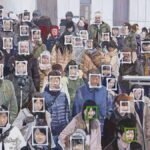
Thank you. Listen to this article using the player above. ✖
Want to listen to this article for FREE?
Complete the form below to unlock access to ALL audio articles.
Phenotypic screening using high-throughput microscopy has proven incredibly fruitful in identifying novel small molecules and improving our understanding of many biological processes. However, these imaging experiments typically only extract one or two features of a cell, leaving vast amounts of data untapped.
Using image-based profiling, researchers can extract many features from each experimental sample. Unlike screening, profiling does not focus on quantifying a small number of pre-determined features that are chosen based on a known association with a disease. Therefore, image-based profiling allows researchers to make discoveries free of bias.
The Cell Painting assay has become one of the most popular imaged-based profiling assays, developed by Dr. Anne Carpenter and her research group at the Broad Institute of Harvard and MIT.
In the Cell Painting assay, small-molecule dyes are used to label cellular compartments which are then imaged in fluorescence channels. Images are segmented and thousands of measurements are then made, describing quantitative traits such as size, shape, stain intensity and stain texture.
First published in 2013, the Cell Painting assay was updated in 2016 and more recently in 2023. The latest protocol involves the simplification of several steps in the workflow and the reduction of several strain concentrations, providing cost savings.
Carpenter and her team also developed CellProfiler, an open-source, high-throughput cell image analysis software that enables researchers to use machine learning to classify complex or subtle phenotypes. Used in combination with the Cell Painting assay, the software provides researchers with the tools to identify, at a single-cell level, how diseases, drugs and genes affect cells.
Technology Networks recently caught up with Carpenter at the European Laboratory Research and Innovation Group‘s (ELRIG) Drug Discovery 2024 event to learn more about the impact the Cell Painting assay is having on the pharmaceutical industry.
Can you tell us more about image-based profiling and its benefits over measuring individual cell phenotypes?
Microscopy images of cells have so much quantitative information that can tell us about the state of a cell. The cell’s image features can very precisely tell us what disease it has, what genes have been perturbed and what drug it’s been treated with. So instead of needing to customize an assay to report on some phenotypic property that took years to figure out, you just measure the morphology of the cell in an unbiased way, and the profile can report what you want to know.
Can you tell us more about the Cell Painting assay and what this assay can tell us about cell morphology?
When we designed the Cell Painting assay, our goal was just to fit the maximum amount of information about morphology into the simplest, cheapest assay. It labels the major organelles and components in the cell, including the DNA, mitochondria, endoplasmic reticulum, Golgi apparatus, actin cytoskeleton, plasma membrane, cytoplasmic RNA and nucleoli. Even though it’s very simple, it turns out that this set of stains can reveal an awful lot about cell state – for example, more than half of FDA-approved drugs yield a phenotype in the assay when tested in just a single cancer cell line.
Can you elaborate on some specific challenges the Cell Painting assay solves?
We’ve been working on testing Cell Painting in just about every application in drug discovery where transcription profiling is used. It seems to have similar or better information content while being cheaper and easier to implement than mRNA profiling.
Cell Painting has been used to select performance-diverse screening libraries, group genes based on function, group chemical compounds based on mechanism, identify the impact of disease-associated variants and discover phenotypes associated with patient cells with various diseases.
What are the benefits (and cons) of using a machine-learning approach in image analysis?
Machine learning, especially deep learning, is often more powerful than conventional image analysis algorithms, as long as they’ve been trained well. We find the improvement can be as much as 30%. The big downside, however, is that the features are less interpretable to the human brain. In biology, it’s often valuable to understand why two samples are different, for example, how are Cell Painting profiles able to tell the difference between cells from patients with a disease versus healthy?
What impact do you hope the Cell Painting assay will have on the pharmaceutical industry in the next two years?
Many companies have already adopted it for certain steps in the discovery pipeline, so my hope is that it will become more integrated and widespread. We are pushing to test Cell Painting right now for predicting compound toxicity, alongside mRNA and protein profiling in the OASIS Consortium which involves 16 pharmaceutical and agrochemical companies. If this works well to detect various types of toxicity, that would be tremendous in improving safety and reducing costs in drug discovery.














